This review was provided for free, and the demo bike was provided by a friend who owns it personally. My goal is to be transparent and unbiased with you, this video and writeup are not meant to be an endorsement of CUBE products. I welcome your corrections, additions, and feedback in the comments below, and the CUBE electric bike forums.
Observations:
- This is a purpose built electric bike with premium drive system and components, designed for all-mountain, enduro, and light downhill riding. The ridiculously long name helps to specify the trim level and tire size (27.5″) on offer. It’s available in four frame sizes and three additional trim levels (four total, starting at $5,500 for the Race), so you can raise or lower the components, frame material, and access different color schemes. The TM model is a mid-level offering with carbon fiber frame and aluminum alloy rear triangle.
Pros:
- It looks great, the attention to detail is very high, and it feels solid when riding on rough and challenging terrain. I did not hear the battery pack rattling around and the extra long rubber slap guard and ethirteen guide ensured there was no damage or chain drops.
- CUBE did a great job with the charging port and battery lock positions on this ebike. There’s a clicking plastic cover for the charge point, which is positioned on the left side of the seat tube vs. lower down on the motor or downtube. The locking cylinder is up high, on the drivetrain side of the bike, and completely covered by a plastic cover to reduce corrosion. I love that CUBE chose to use an ABUS locking core which includes the keyed-alike option for ABUS locks.
- The PowerTube 625 is one pound heavier than the PowerTube 500 (~14% heavier) but offers 25% higher battery capacity! This means you can use eMTB and Turbo assist levels more frequently without running out of juice. Overall, the bike is fairly lightweight given the long travel suspension and wider Boost hub spacing.
- The SRAM NX derailleur, steel narrow-wide chainring, and single click trigger shifters are all ebike specific. They are sturdier overall, and designed to mitigate damage from the high-powered Bosch CX mid-drive motor. I’m a fan of the wide 12-speed 10-50 tooth cassette spread here, because it’s more capable for climbs and descents, and offers more cadence options that could provide an edge in an actual enduro race environment.
- The brakes on this bike are amazing. The Magura MT7 feature lightweight carbotecture housings, aluminum alloy two-finger tool-free adjustable reach levers, and the piston is oriented perpendicular to the handlebar for consistent force. The quad piston calipers provide a larger brake pad surface and wrap concentrically around the large 203mm rotors. The rotors themselves feature an aluminum alloy carrier in the center, and carbon steel rotors that are floating… connected through a puzzle-like shape. This allows the rotor to expand and contract as heat is increased or decreased, without warping or cracking.
- Wheel specific tires provide weight savings and steering benefits. They are both 27.5″ but the rear is narrower 2.4″ while the front 2.5″ has deeper knobs that flare out a bit. Note that the rims and frame can accommodate wider plus sized tires in 2.6″ and 2.8″ as was shown during the review. The bike features Boost hub spacing 110mm front and 148mm rear with sturdy thru-axles.
- High performance Fox air suspension with thicker stanchions provide strength for the longer 170/160mm travel and heavier boost hub spacing and tires. You should get reduced flex and stiction, and both suspension elements deliver compression adjust, rebound, and air pressure.
- It appears that this ebike uses a four-bar Horst Link rear suspension design which is celebrated for reduced brake squat and chain kickback, and improved overall power delivery when pedaling.
- Wires are mostly internally routed, which improves the aesthetic and reduces snag potential. Note that the highest level models route through the widened headset spacers for an even cleaner look.
- In addition to the wide range of frame sizes, the frame itself has been designed with a steep top tube that reduces standover height. I love that the rear suspension features a trunnion mount to reduce eye to eye length, and that they were still able to squeeze bottle cage bosses onto the frame! Dropper post travel will depend on the frame size you choose, CUBE specs these components differently for optimal fit.
- Longer double-sided rubber slap guard and plastic chain guide reduces the sound and chips that can crop up with all-mountian and downhill riding (as the chain bounces all around). The slap guard has channels that appear to route mud and water vs. layering it. The narrow-wide chainring provides tighter grab that reduces the possibility of slipping and drops.
- The Bosch Performance Line CX motor has gotten a lot smaller and lighter for the fourth generation, weighing 2.5lbs less than Gen 3, it offers 85 newton meters of peak torque, shift detection, and eMTB mode which provides a full range of power as pedal torque increases, so you don’t have to think about adjusting the power while also adjusting your gears. This is the level of assist that I was using for the entire video review ride.
- The Bosch ebike motor controller measures rear wheel speed, pedal cadence, and pedal torque over 1,000 times per second and is one of the more reliable and reputable ebike drive systems around, they partner with Magura to provide great customer support across North America and offer a solid two-year comprehensive warranty.
- All of the Gen 4 Bosch Performance Line motors now offer 120+ RPM pedal support, meaning that the motor can keep up with greater than 120 pedal strokes per minute, so you won’t be left without power when downshifting and spinning approaching a steep hill.
- The Bosch CX motor does use more electricity and produce more noise because of the zip and torque on offer so I like that they went with the high-capacity Bosch Powerpack 625 and that you get the 4 amp charger for faster turnaround time, the charger is relatively lightweight, compact, and can fill the battery on or off the frame without the need for any dongles… the proprietary plug interface is durable and won’t get confused with other charging devices you might own, it’s my favorite charger!
- CUBE has refined their battery cover design for the PowerTube on these models to a universal black rubber, which is easier and cheaper to replace than some of the color matched alloy coverings that competitors use. The only downside is that it’s not lockable.
- You get the nicest Bosch battery pack on offer for this generation of products, with 625 watt hours on offer, you can ride further without the need for a charge… or you can use higher levels of assist longer without running out of juice, the pack is durable, standardized across other Bosch powered electric bicycles, and has a two-step release so it won’t tumble out if you want to remove it to lighten the weight of the bike or just store it separately (avoid extreme heat which can damage cells and extreme cold which limits the usable capacity temporarily)
- The Bosch Kiox display panel is removable, has a Gorilla Glass screen that’s durable, can charge portable electronics with the integrated 5 volt 1 amp Micro USB port on the bottom (though it’s difficult to reach on this bike), and offers ANT+ wireless support for heart rate monitors, and Bluetooth for the Bosch eBike Connect smartphone app (iOS and Android). I love the dedicated control pad, how easy it is to reach the settings menu, and how complete the menus are here. They include everything from current speed to battery percentage, range estimate, and pedal cadence. It’s a very rich experience.
Cons:
- CUBE has a Canadian website, and a European website, but they don’t seem to have a United States website. So, you might struggle to get the official price and see photos and details relating to the North America version of this ebike. I did, but was able to reach official reps at the company to get most of my questions answered, which are all conveyed within the stats and review details here.
- Since the plastic cover for the battery pack does not lock to the frame, it could get stolen more easily than some alternative designs… but at least it’s standardized and probably easier/cheaper to replace. I also like how it seems to be water tight and has extra thick rubber near the base, where rocks could get kicked up from the front tire.
- I was a little disappointed to discover that the key must be inserted and twisted against the lock spring to re-insert the battery pack. This can be difficult to accomplish while also holding the battery in position and trying to align it properly, it requires extra coordination. The upside is that it probably locks the battery more securely than some of the alternative battery mount designs.
- CUBE products are mostly sold through dealers. They are a well-known global company, but their dealer base is somewhat limited in North America (Canada and the US). If you don’t live near a big city, you may struggle to find this bike, and it may not be available online. Since there are four trim levels and four sizes for the Stereo enduro models, you might struggle to find the exact product you want.
- The bike is only available in one color scheme. It looks pretty good and I feel that the tones are gender neutral. Consider upgrading or downgrading to different trim levels if you want a different color scheme than the metallic gray, black, and orange here.
- I really love the fourth generation Bosch Performance Line CX mid-motors because they are powerful and natural. However, they do produce additional whirring noise compared to lower power Bosch options, and even some similarly rated products from competitors like Yamaha, Brose, and Shimano. I’m glad that they are using standard sized chainrings now vs. the earlier generations that had reduction gearing, because those were louder.
- The location of the battery charging port is very low on the left side of the seat tube, pretty close to the left crank arm. When plugged in, the charging cable actually blocks the rotation path of the left crank arm, so be careful not to bump the pedals. Consider charging the battery off the bike, and do store it in a cool dry location when not in use as extreme cold and heat will impact the cells. Keep it at least 50% charged when you know it isn’t going to be used for a long stretch of time.
- CUBE chose to use the older left chain stay mounted Bosch speed reader and spoke magnet vs. some of the newest designs which are integrated into the disc brake carrier and frame. Those designs are less vulnerable to being bumped out of place or throwing your spoke out of true. If you pay more for the highest specced Stereo enduro model, you’ll get the integrated sensor, as we discuss in the video review above… but it’s ~$12k
- I like the positioning offered by the custom CUBE display panel mount (it reminds me of a Garmin display mount), but the base of the KioX display panel is so close to the handlebar and stem that it makes charging portable electronics difficult or impossible.
- Many CUBE electric bike models forego pedals, so you have to spend extra to add them aftermarket. My friend Marc had purchased and mounted some RaceFace Chester pedals with adjustable height pins. I also like the lightweight magnesium Wellgo pedals with fixed or adjustable pins.
- Only the front wheel offers quick release, the rear wheel uses a 5mm hex bolt, so you’ll need a tool to perform trail maintenance, there’s not toolkit built onto the bike or secret tools stored under the stem cap or elsewhere like we’ve seen on some of the Specialized models.
- The SRAM trigger shifter offers a one-direction high lever vs. two-direction on many Shimano parts that I test… They are ebike specific, and only allow one gear change per click. This is meant to help reduce mashing, but requires additional time and stops advanced riders from dumping gears and easing off the pedals during a big hill approach. I prefer Shimano Deore XT, personally.
- This is a minor thing, but the chainring doesn’t cycle backwards when you backpedal, this changes how drivetrain service is done… you basically need a bike maintenance stand or a friend to lift the bike and pedal to clean and lubricate the chain. One positive note here is that Bosch has setup the bottom bracket with some resistance so the cranks won’t spin as freely backwards, which could lead to more shin scrapes and shin bumps otherwise.
- Be careful when lifting and transporting the Powertube battery because it does not have an integrated handle like the PowerPack mid-frame and rear-rack models, I do appreciate how it clicks down one step before completely coming off the bike, you are less likely to drop it when removing.



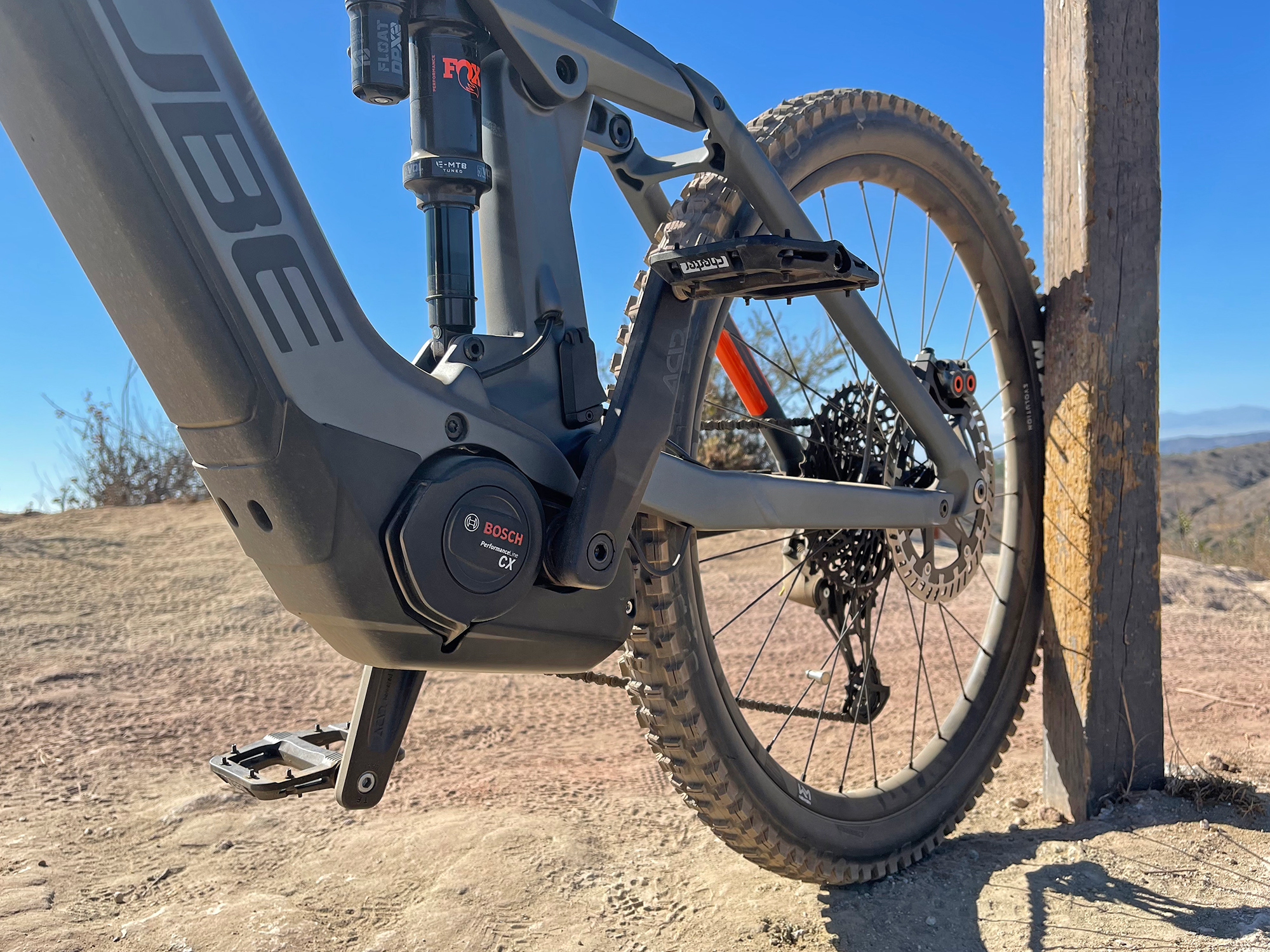
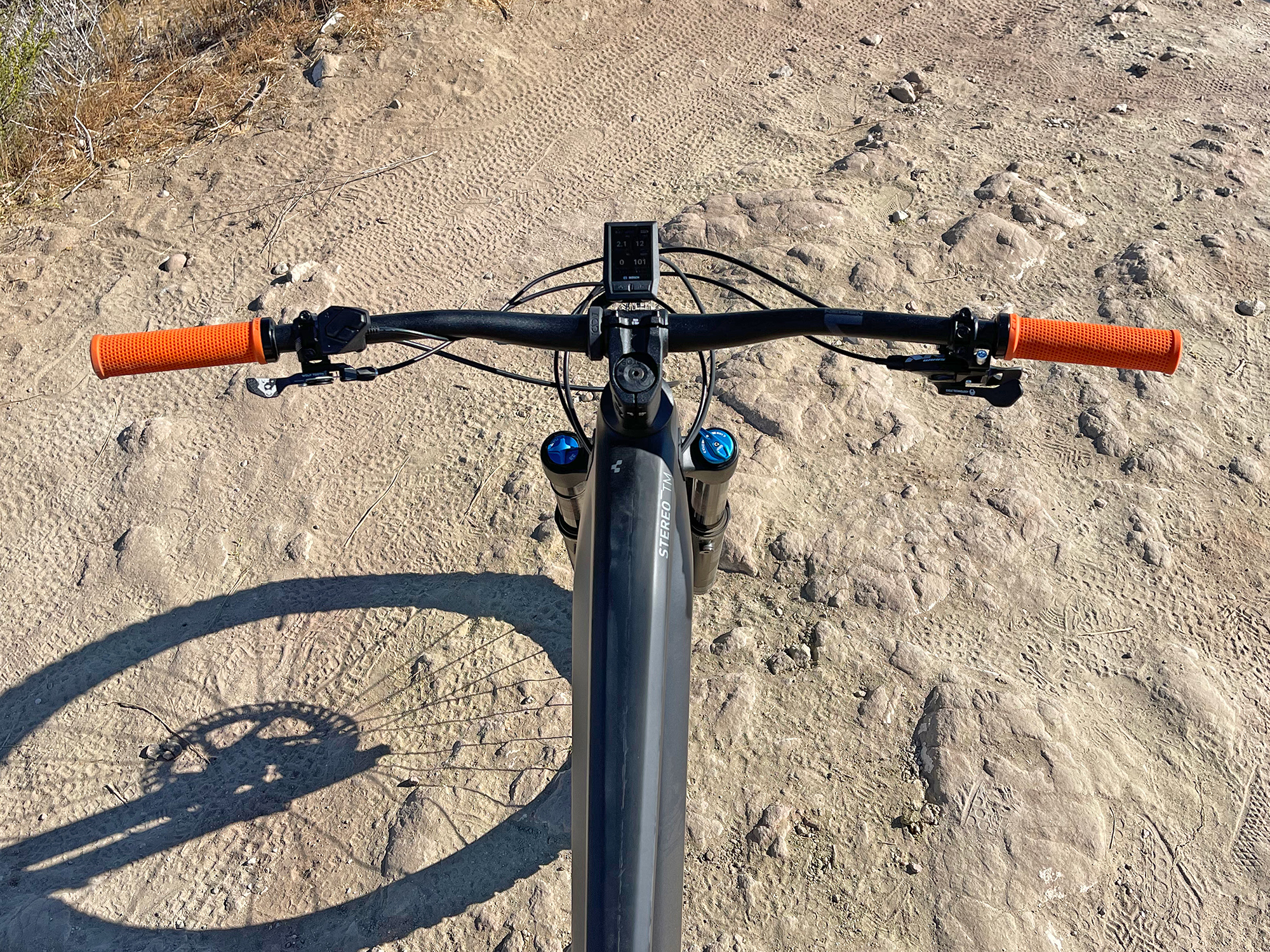

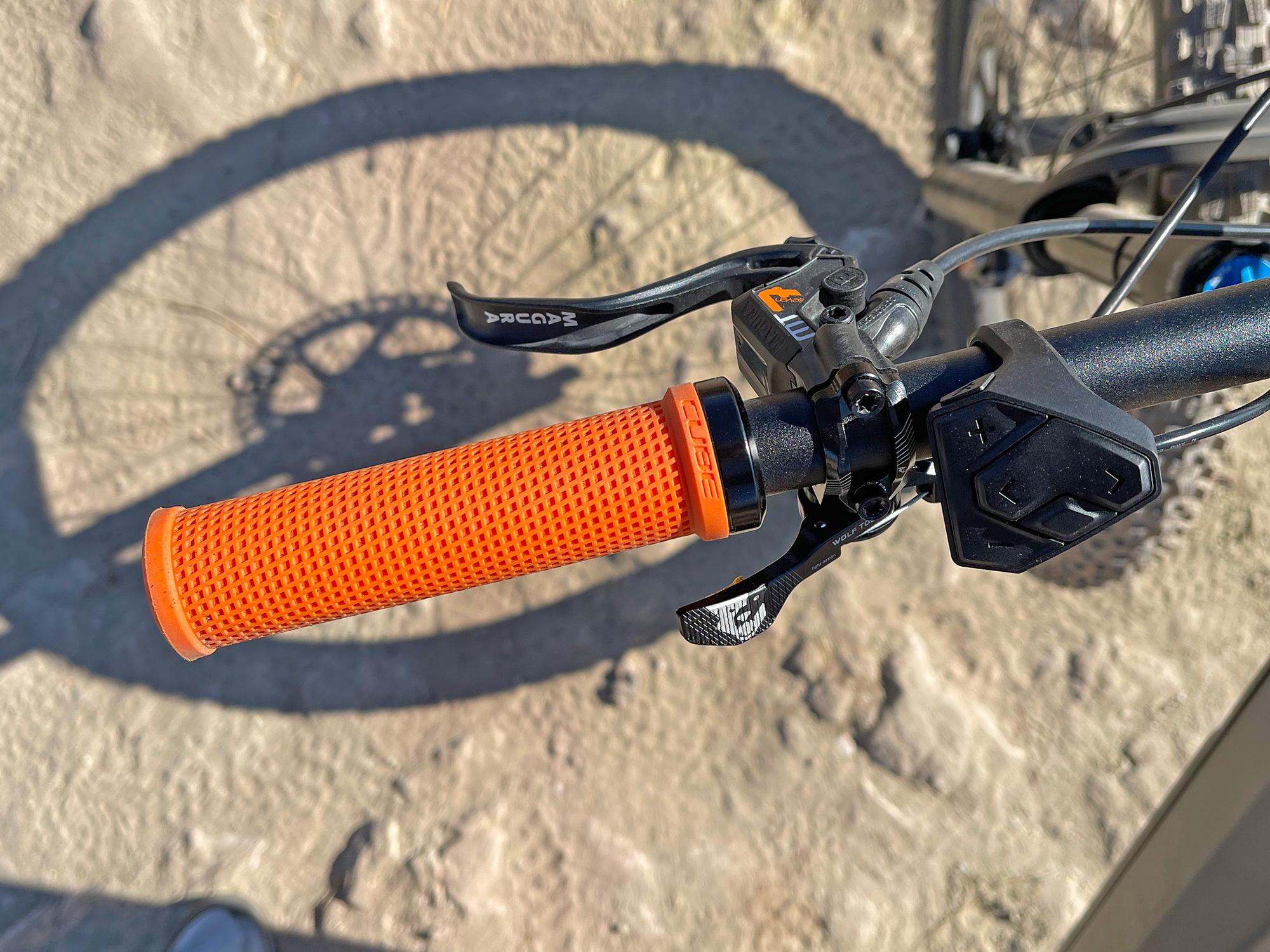
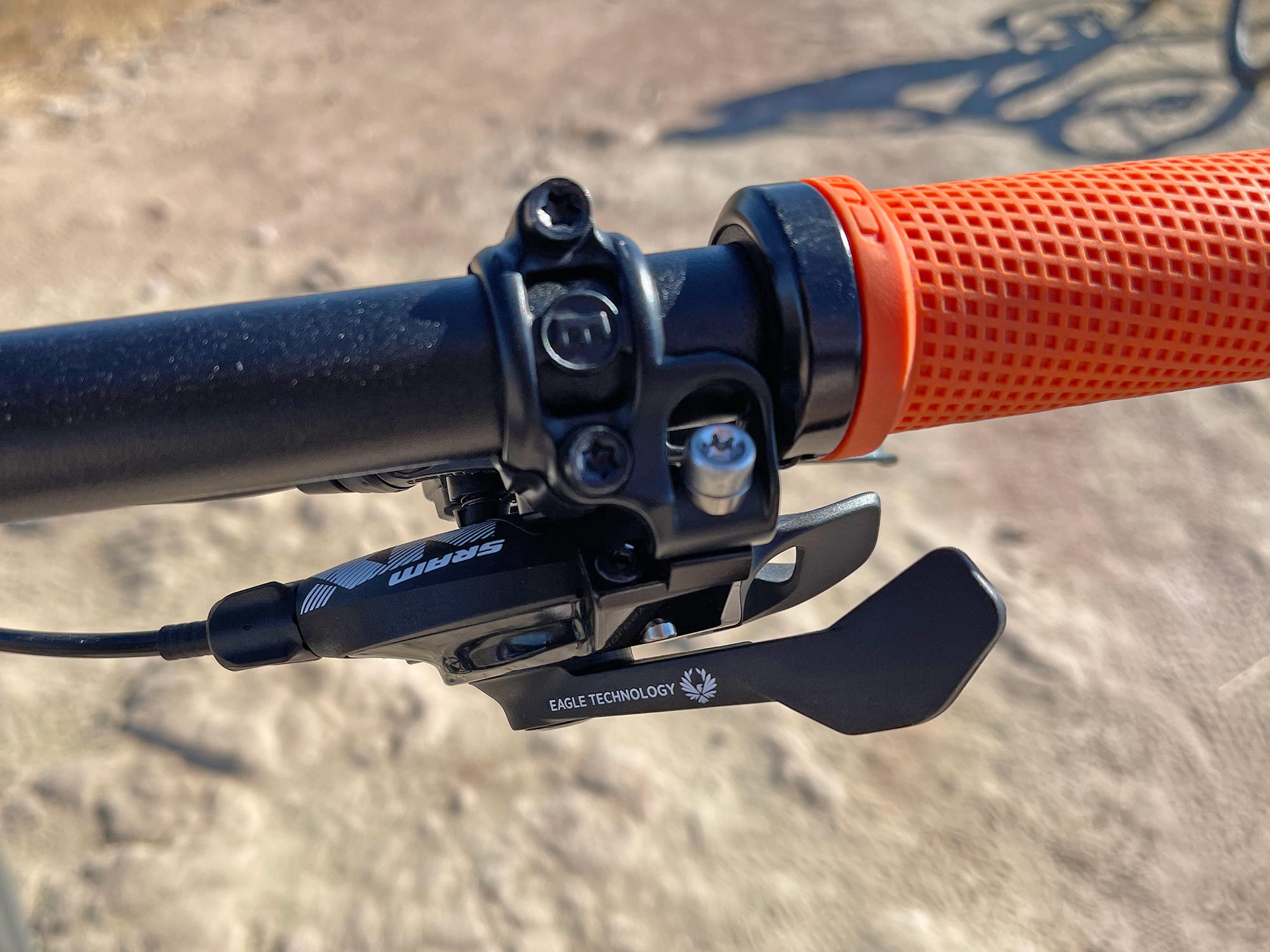
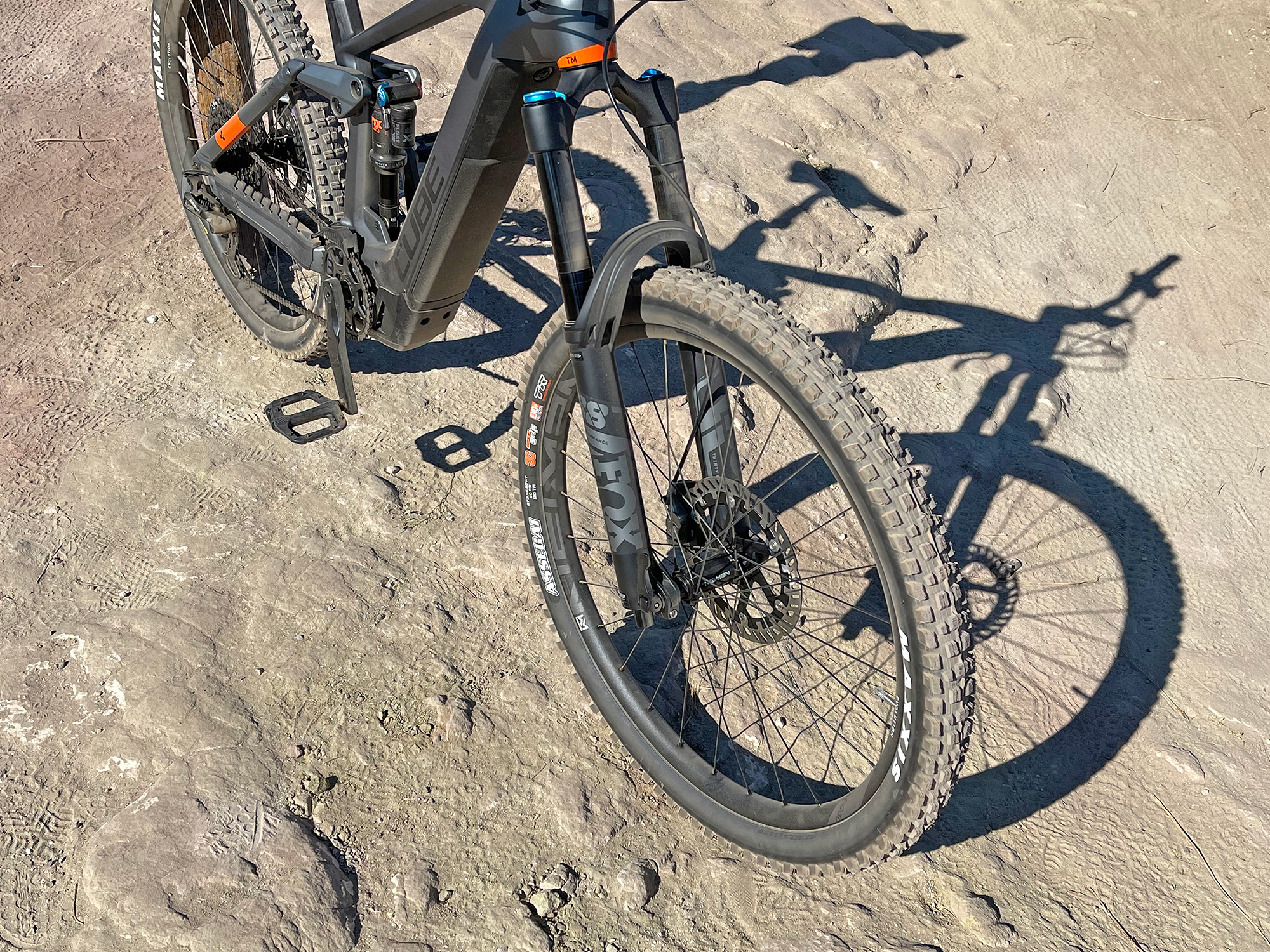

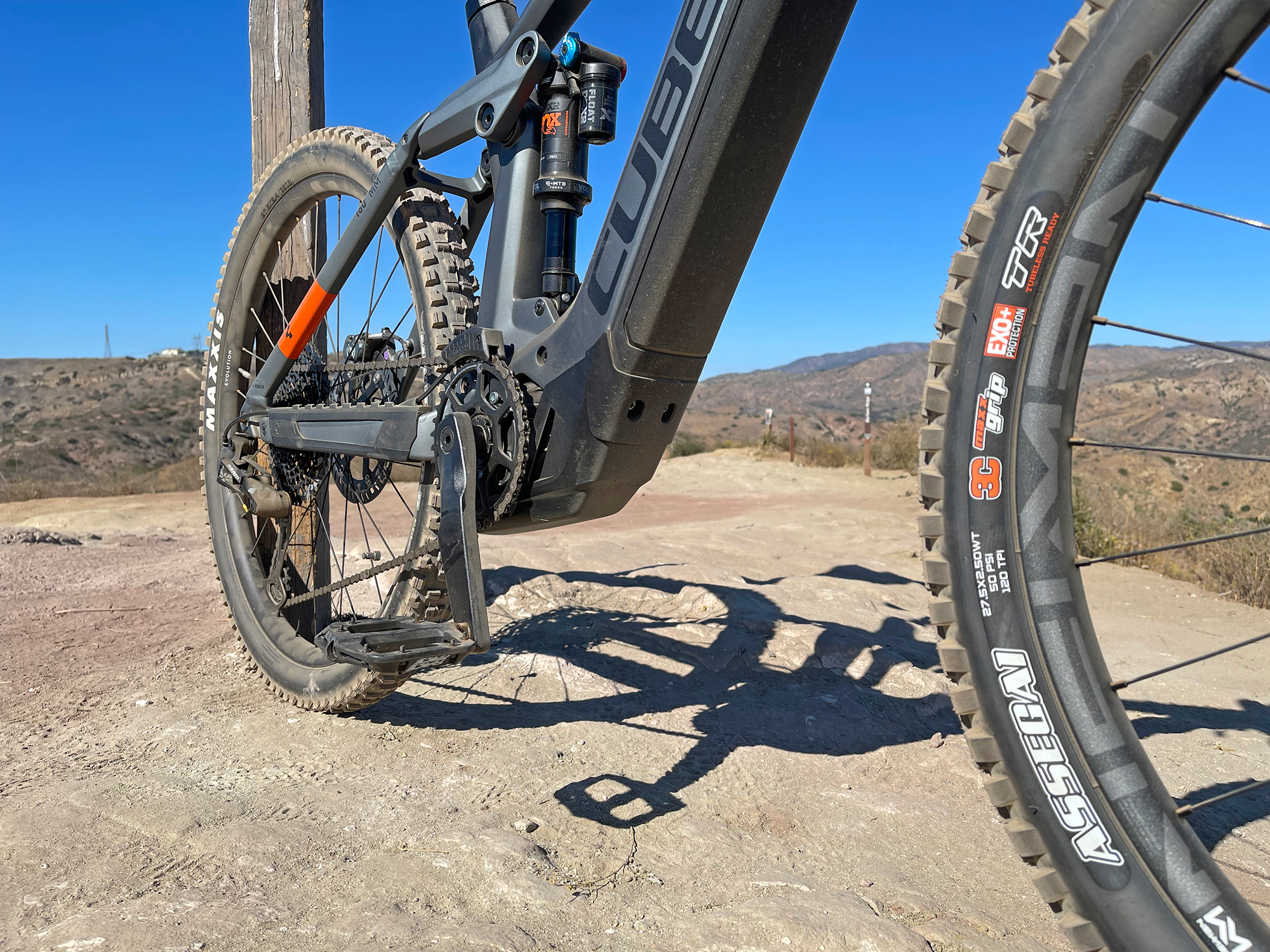

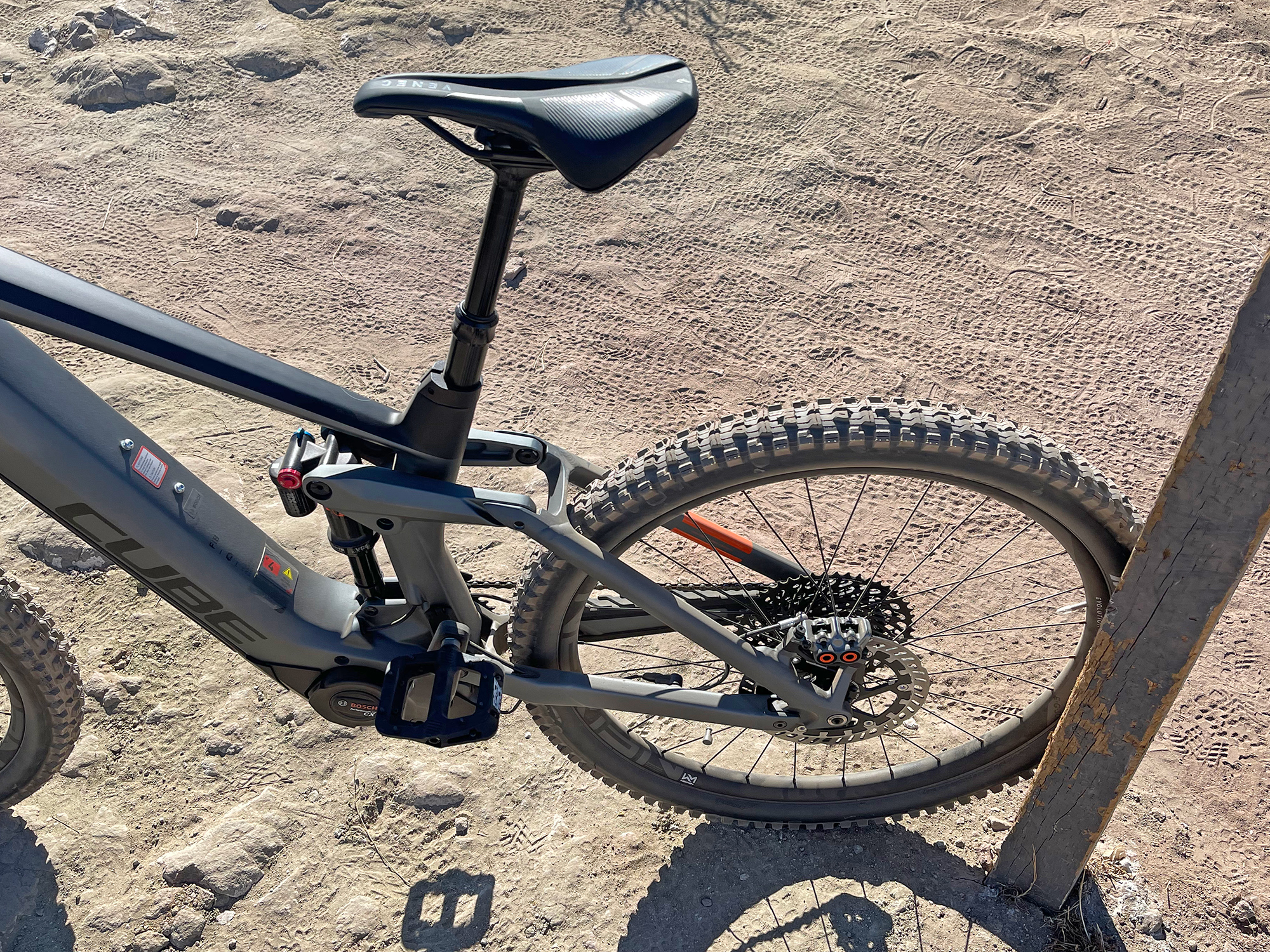
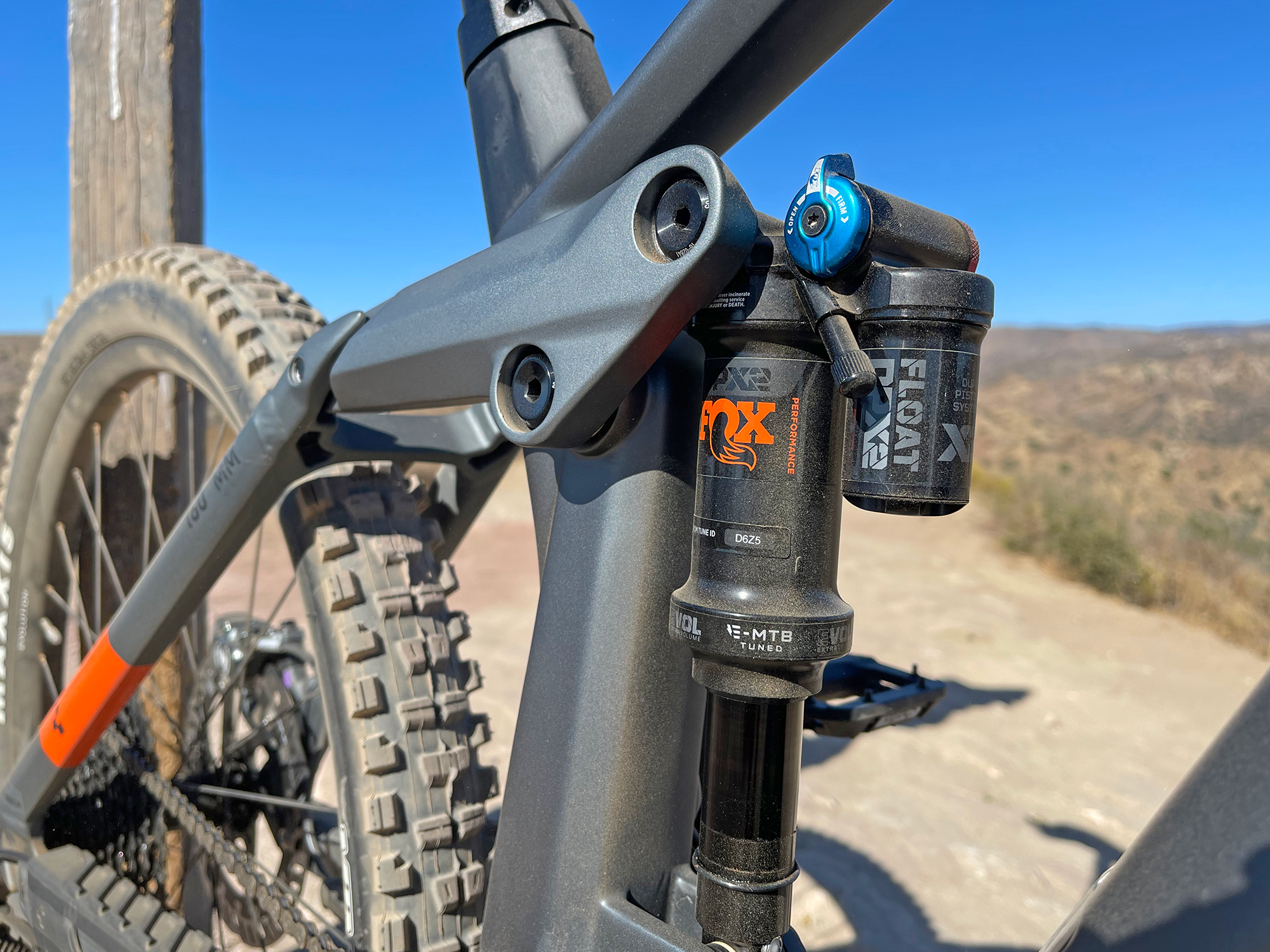

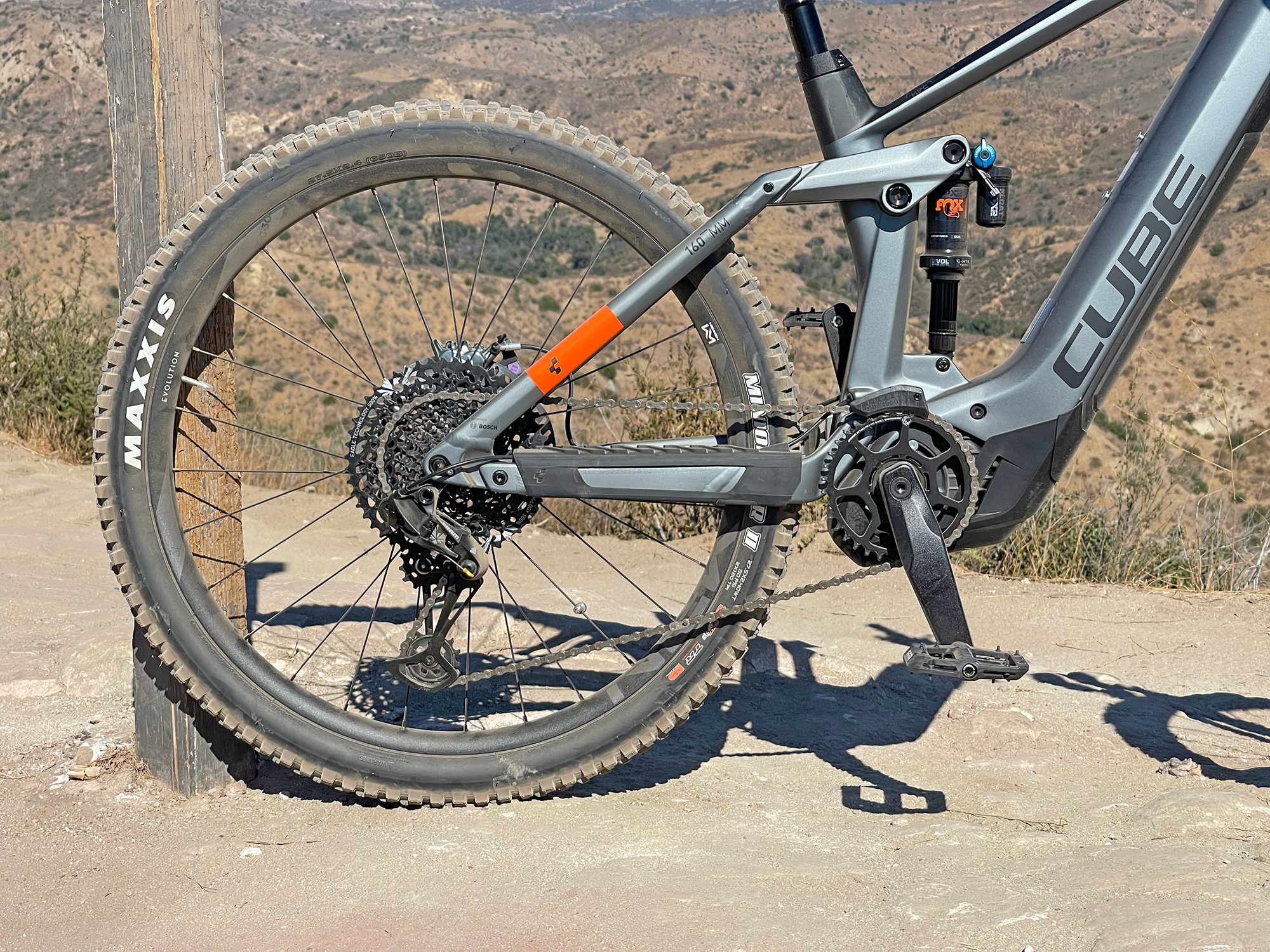
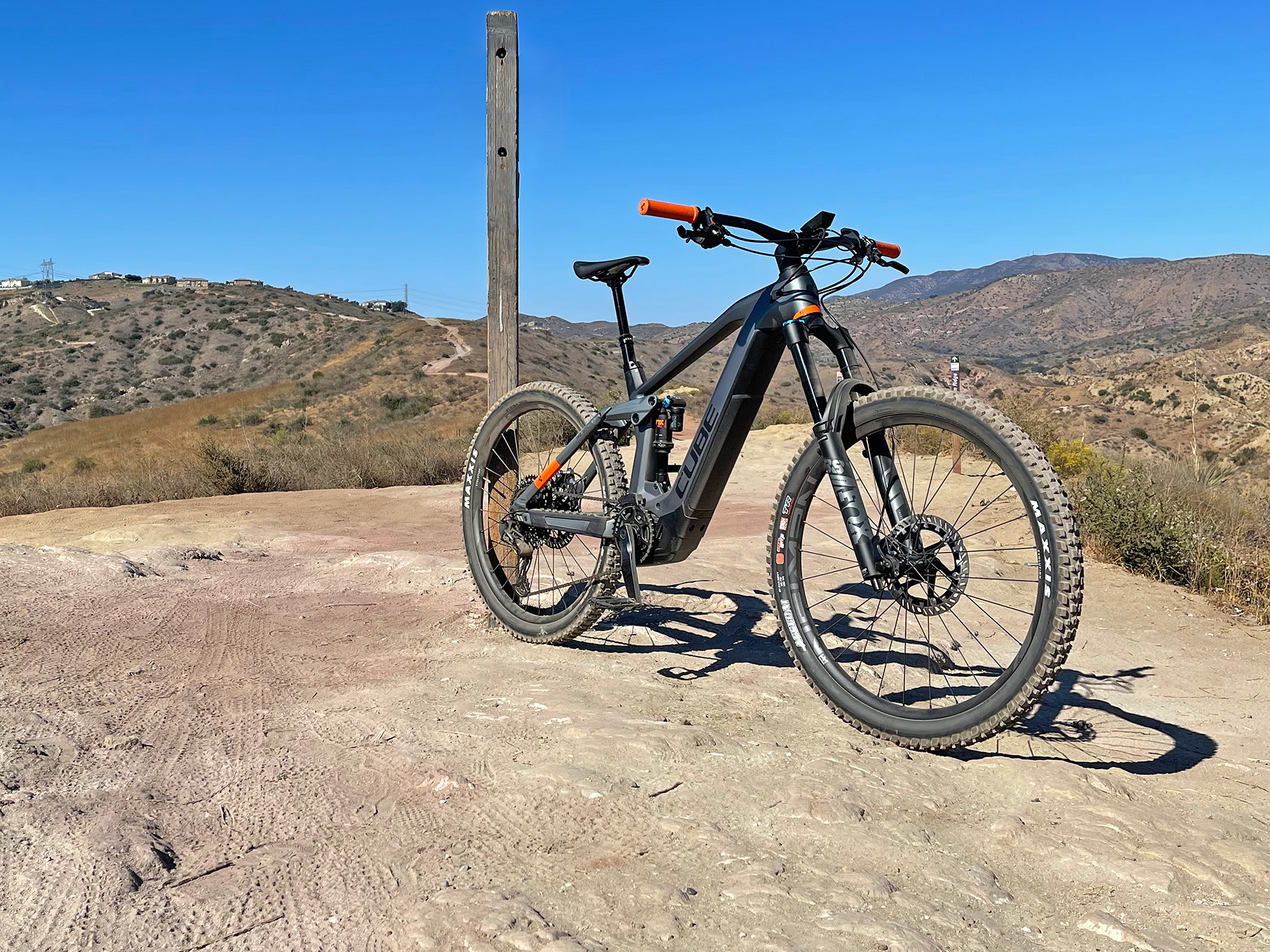
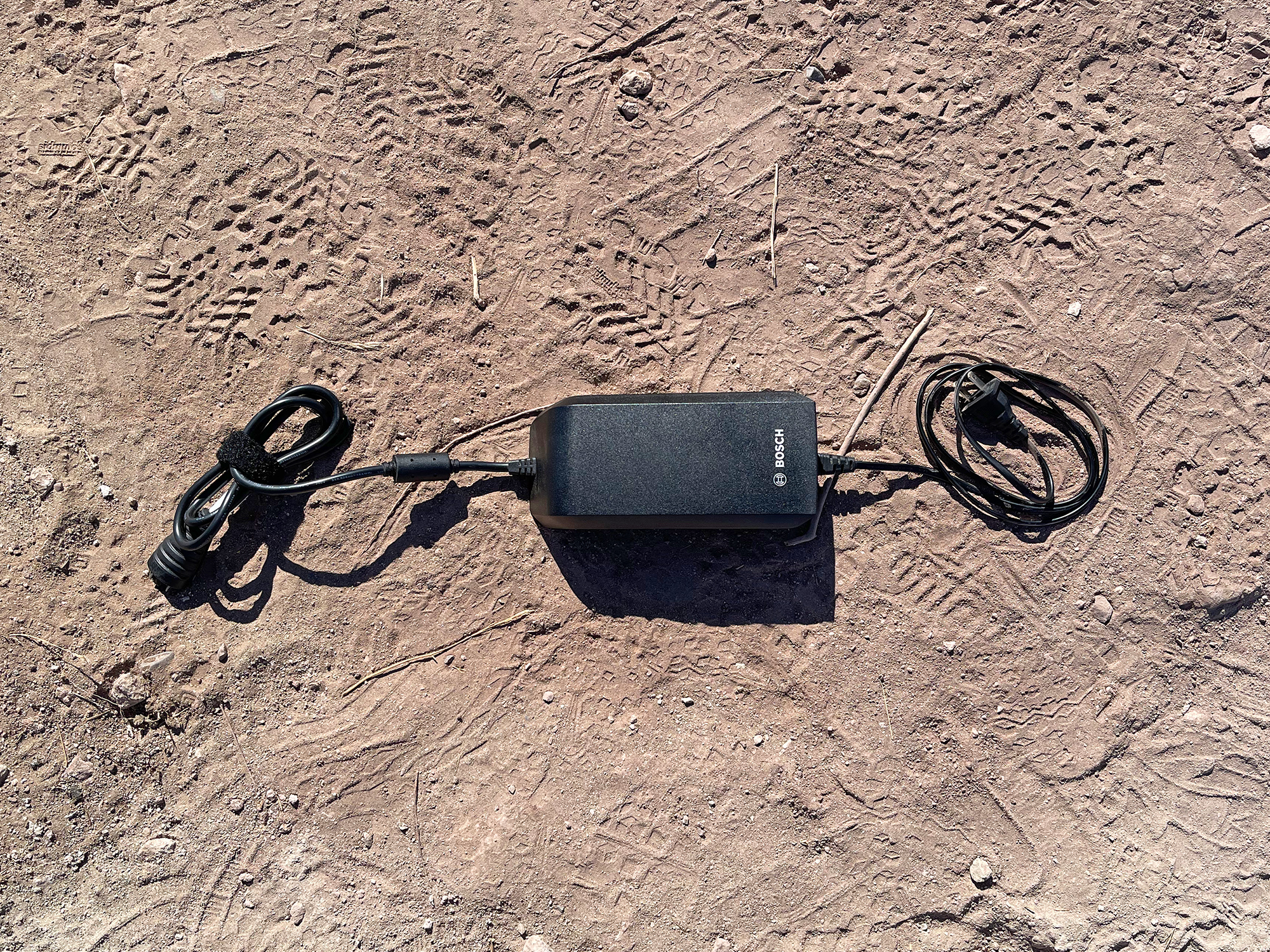
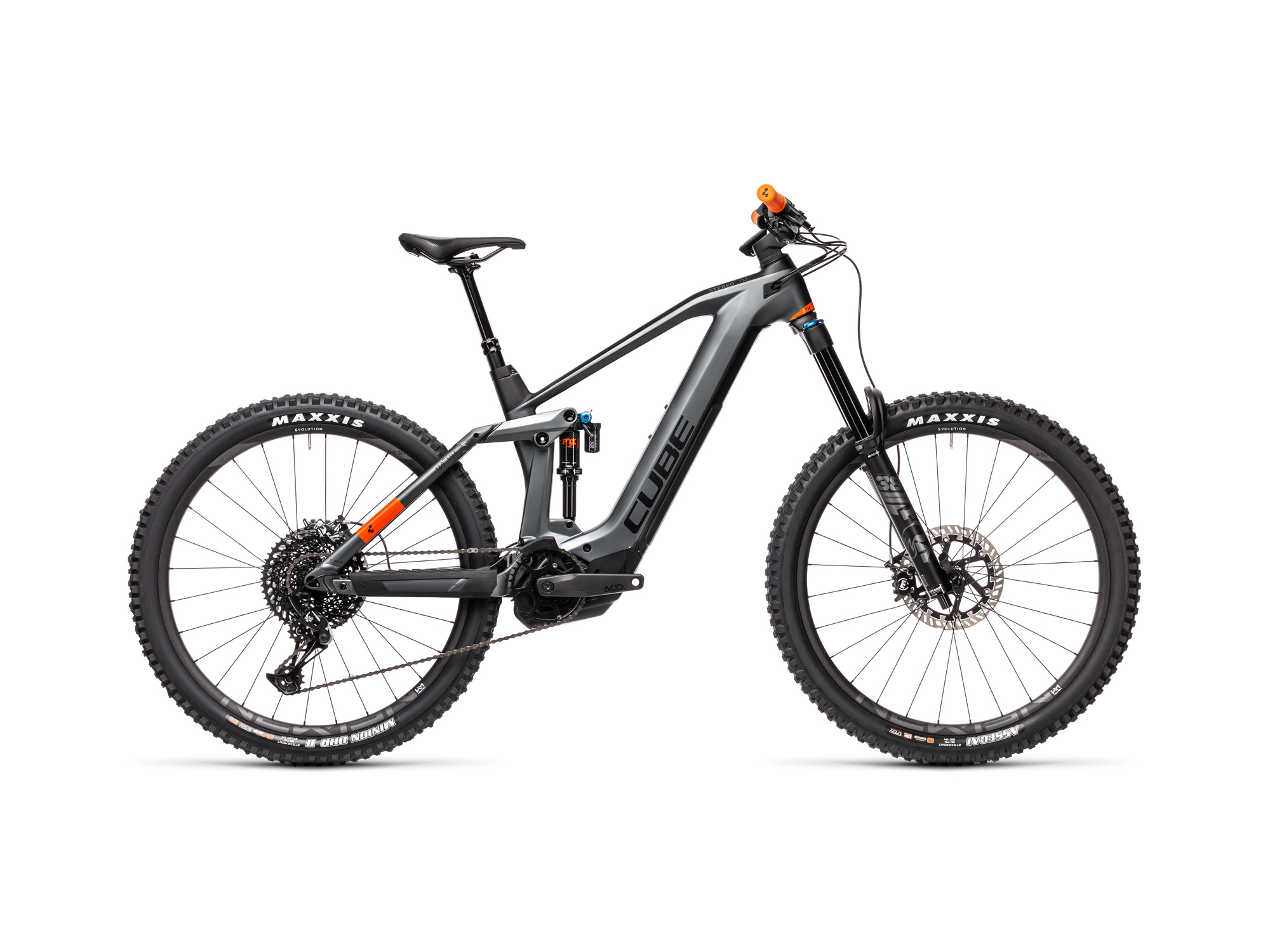

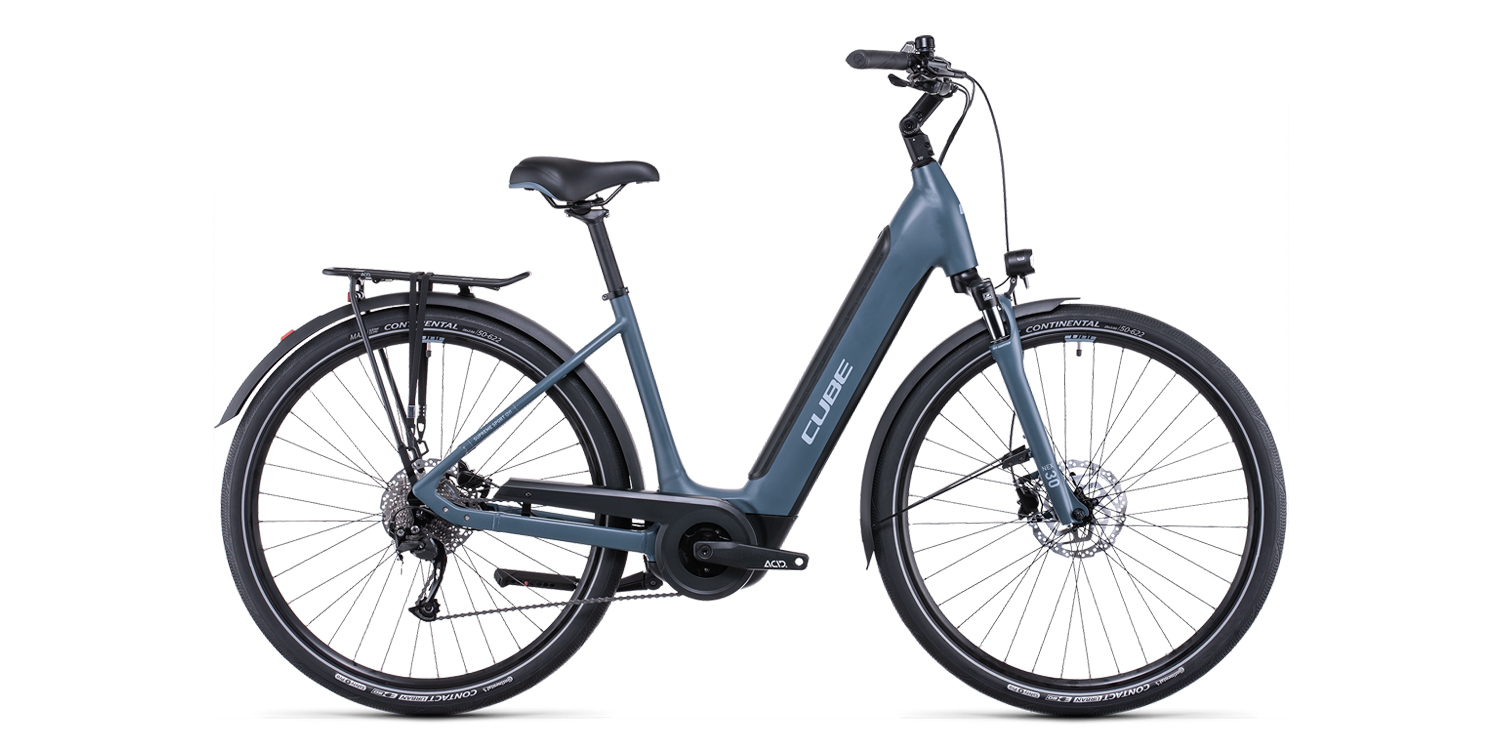
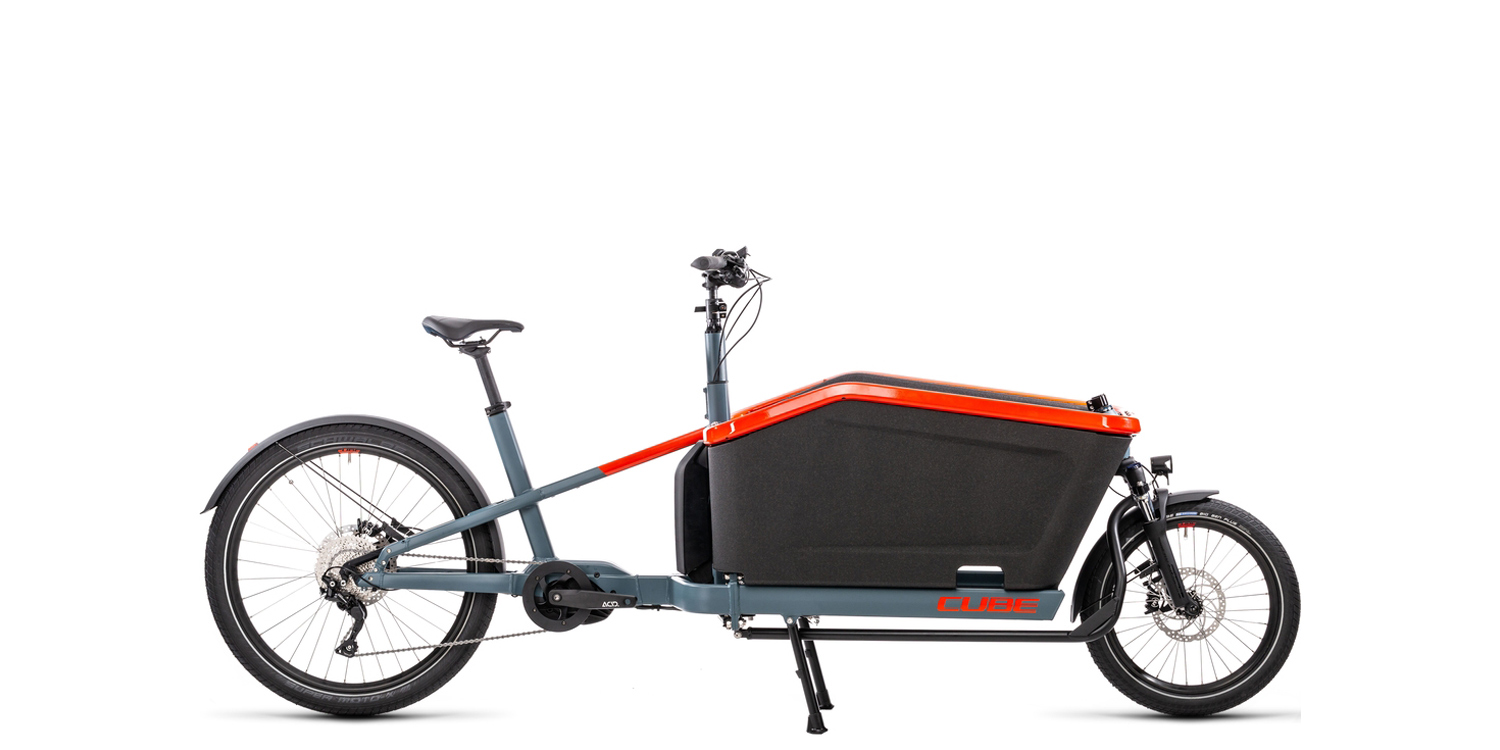

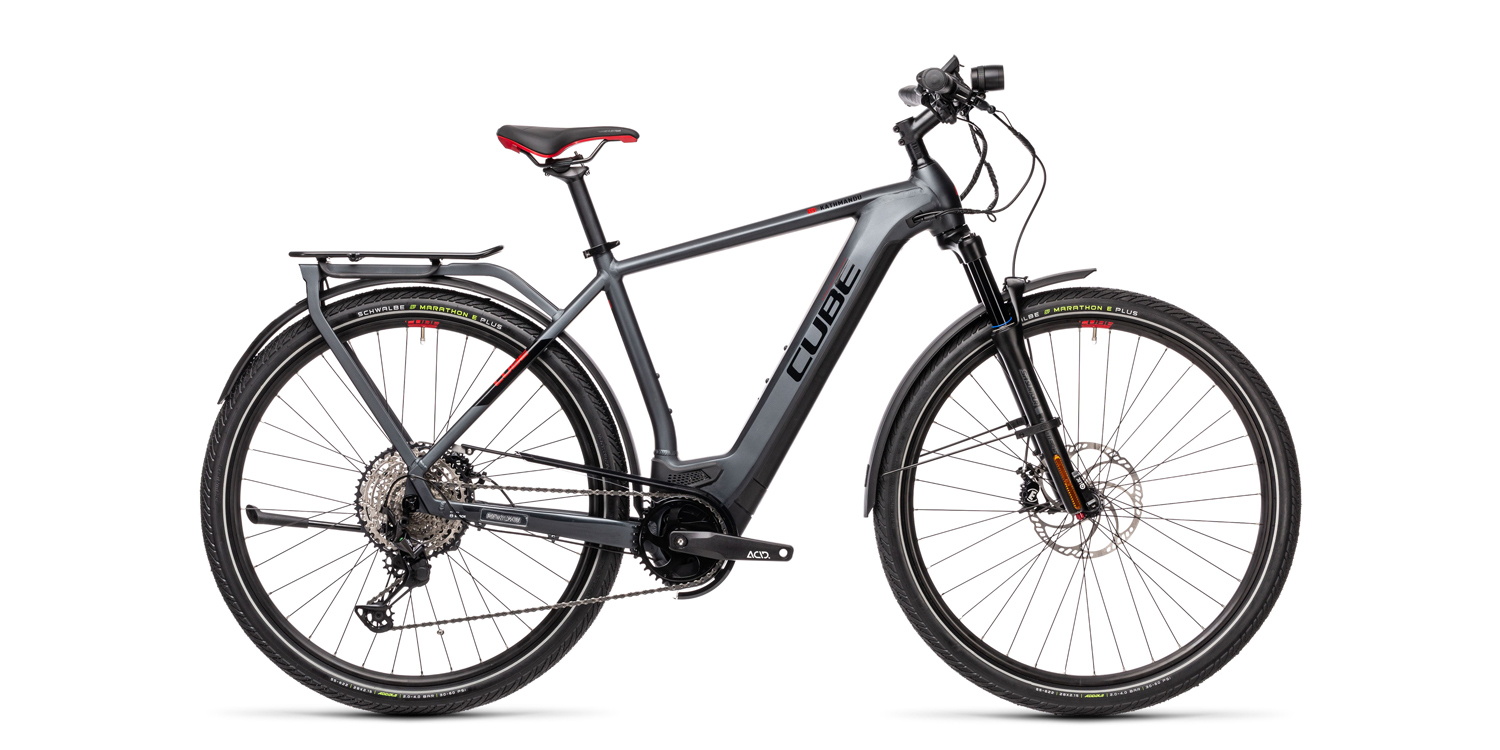
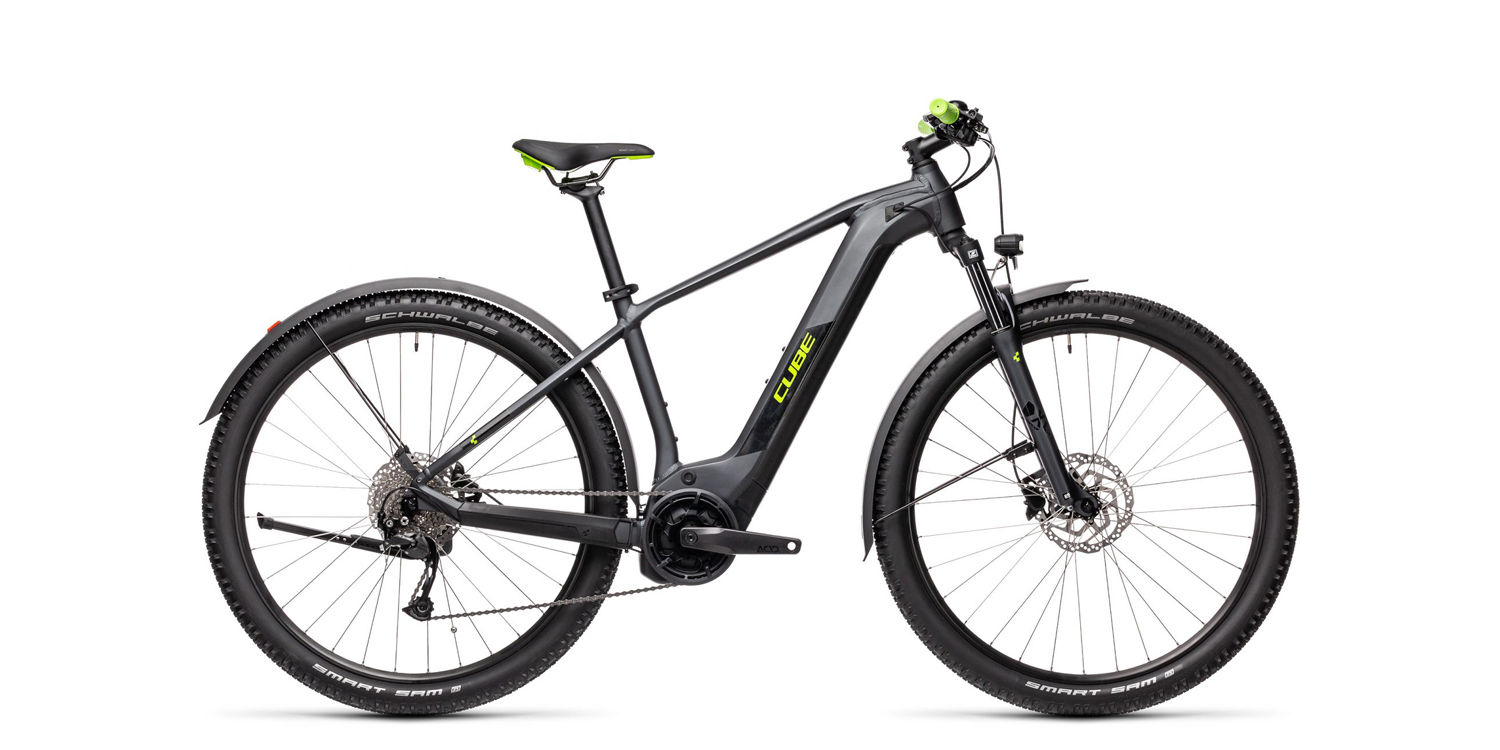
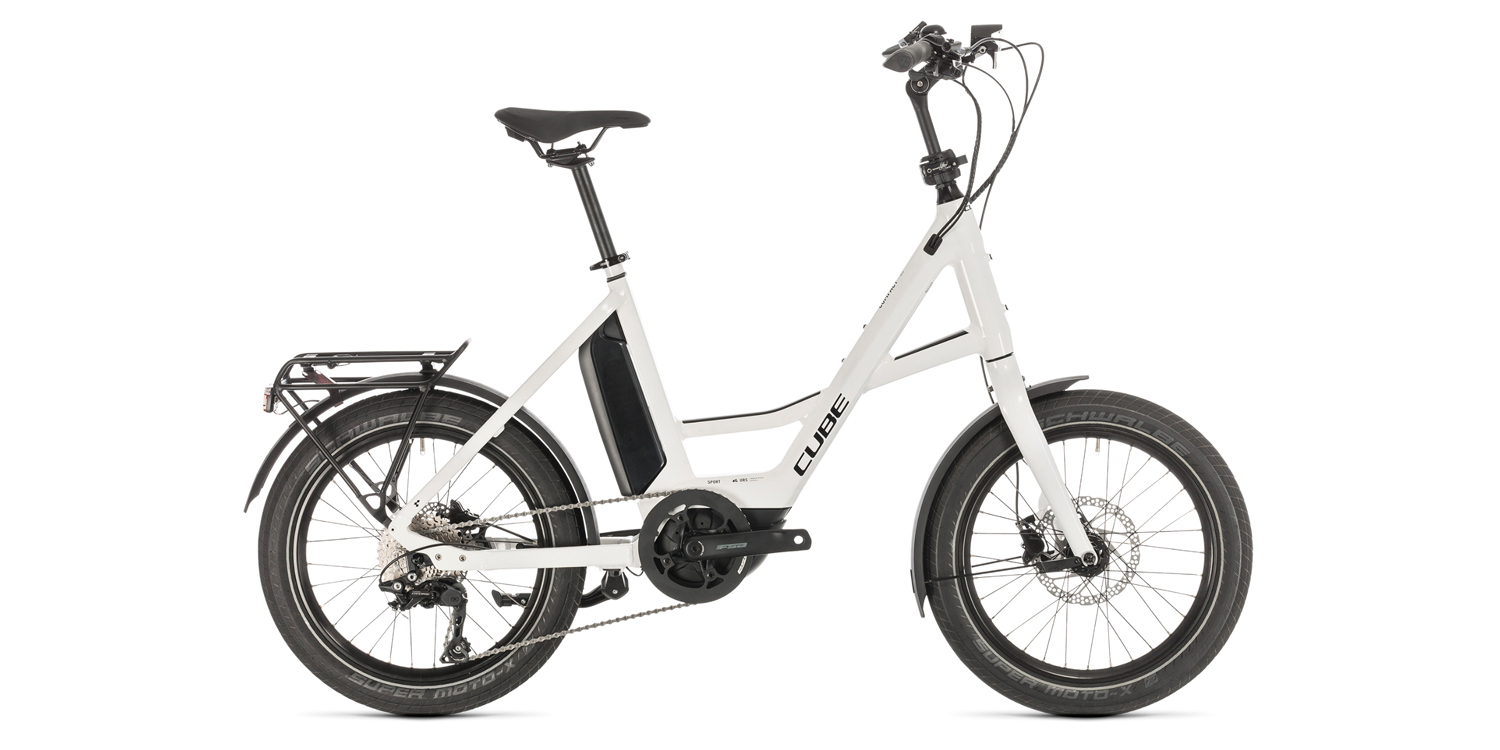
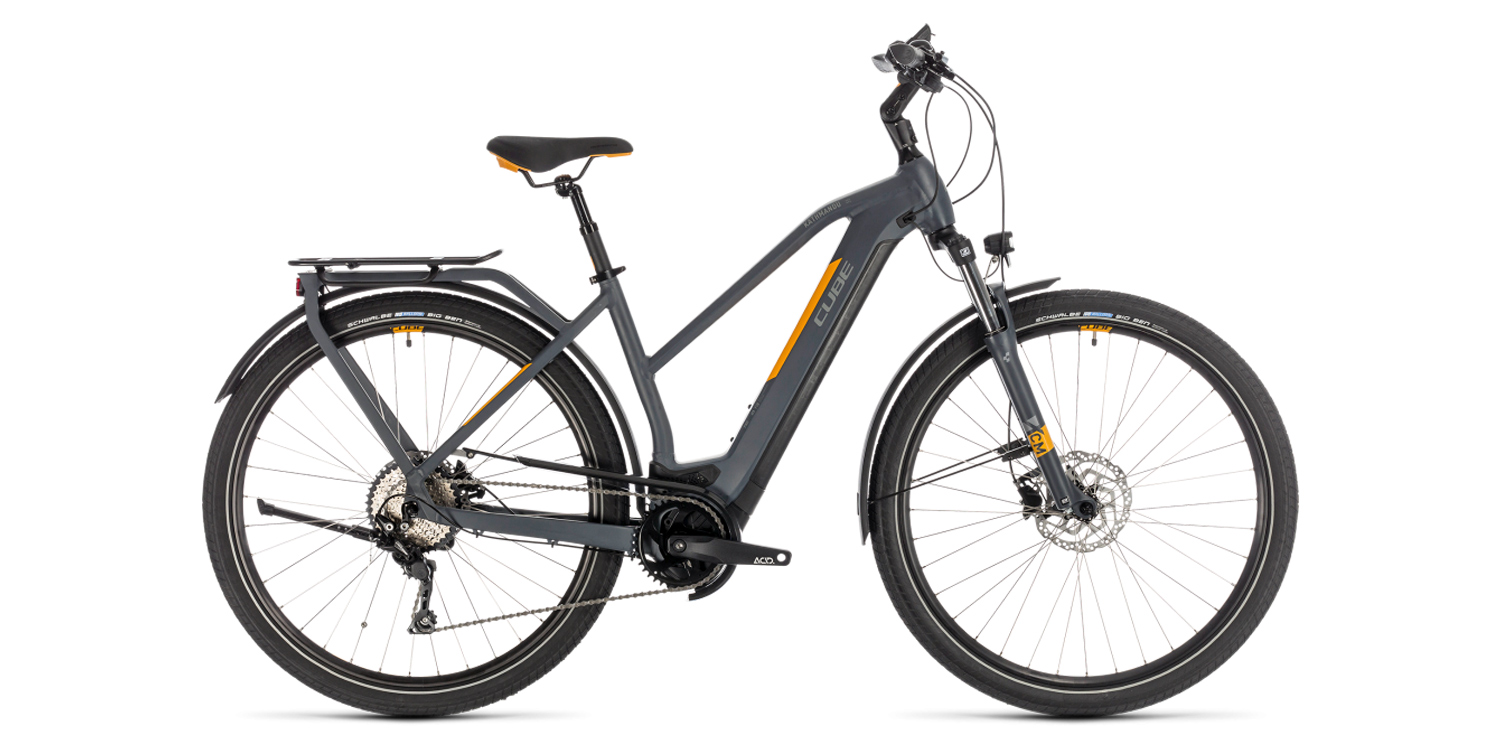
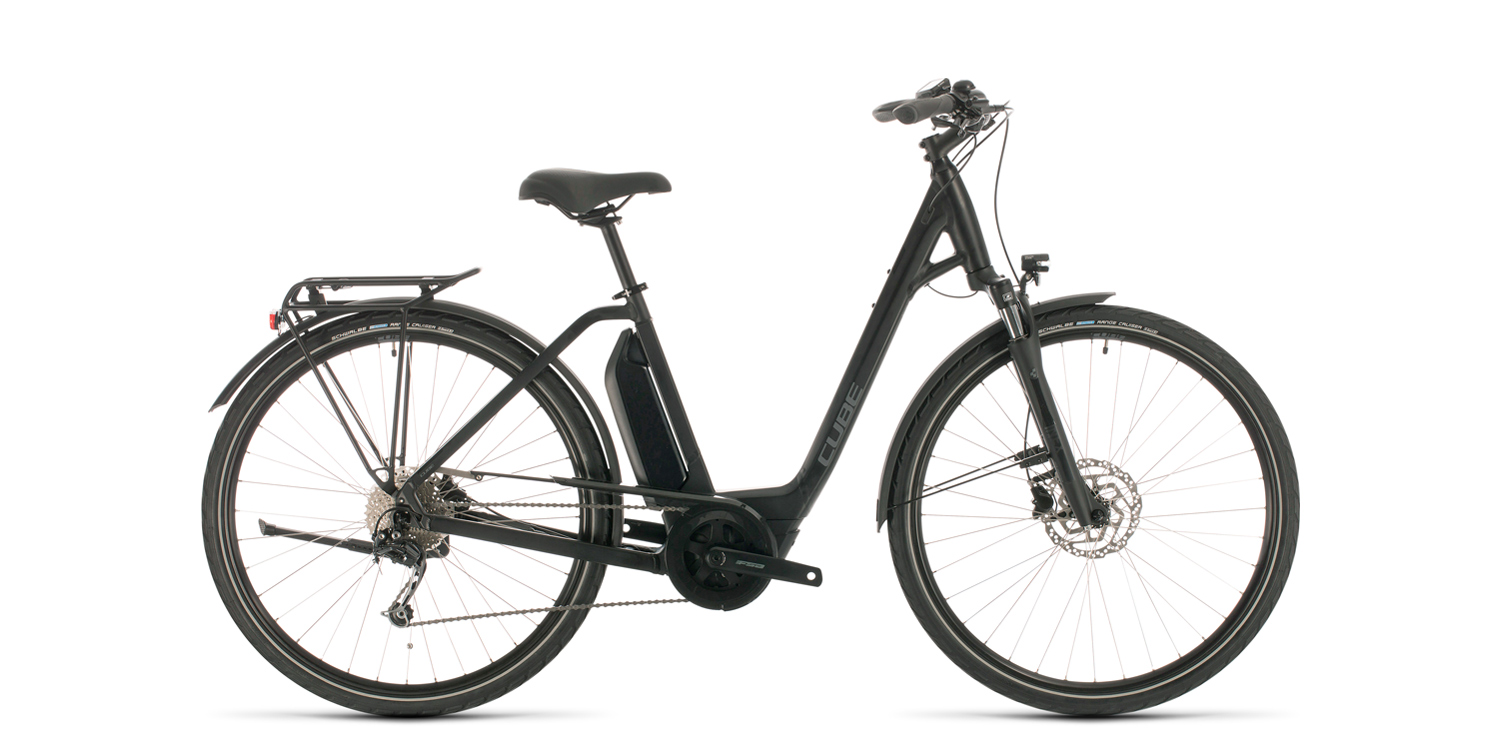
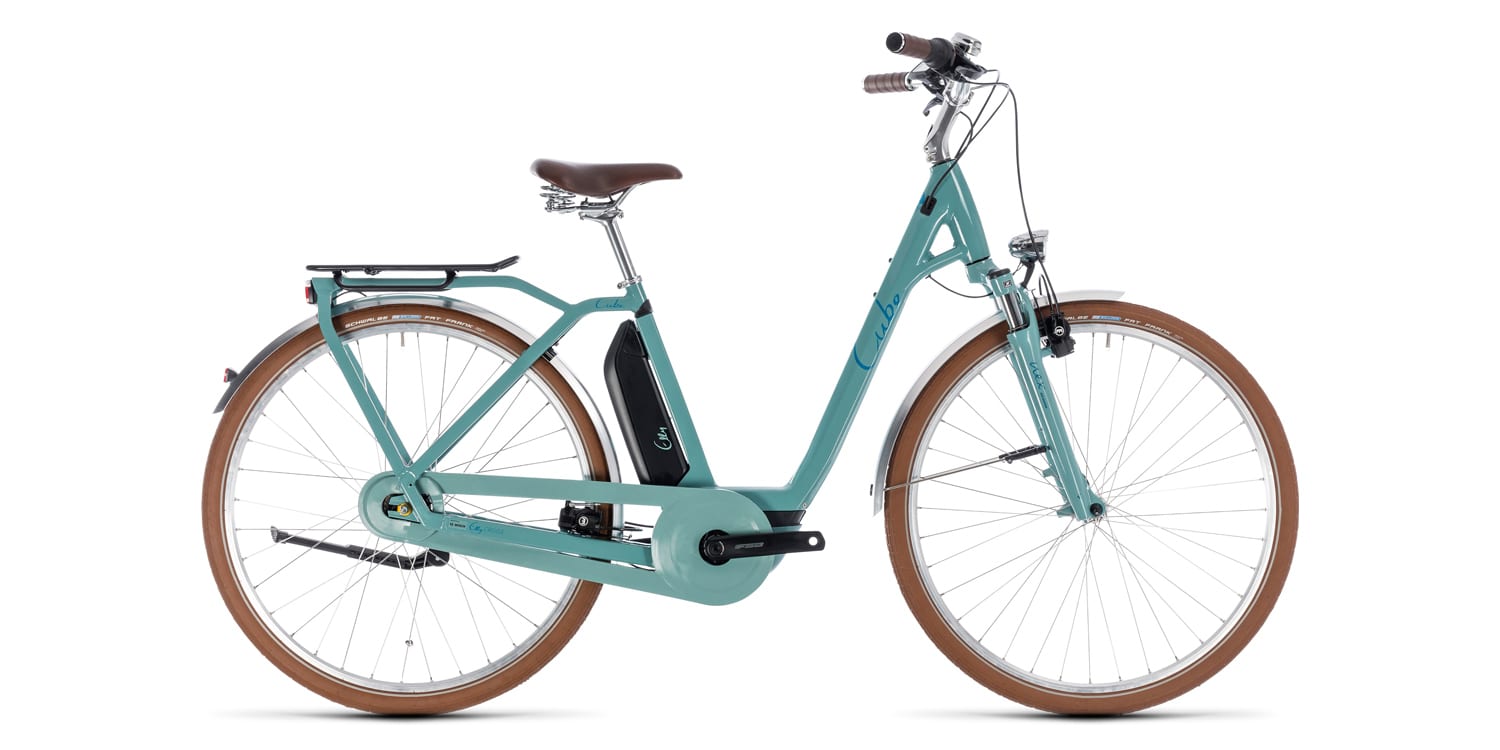
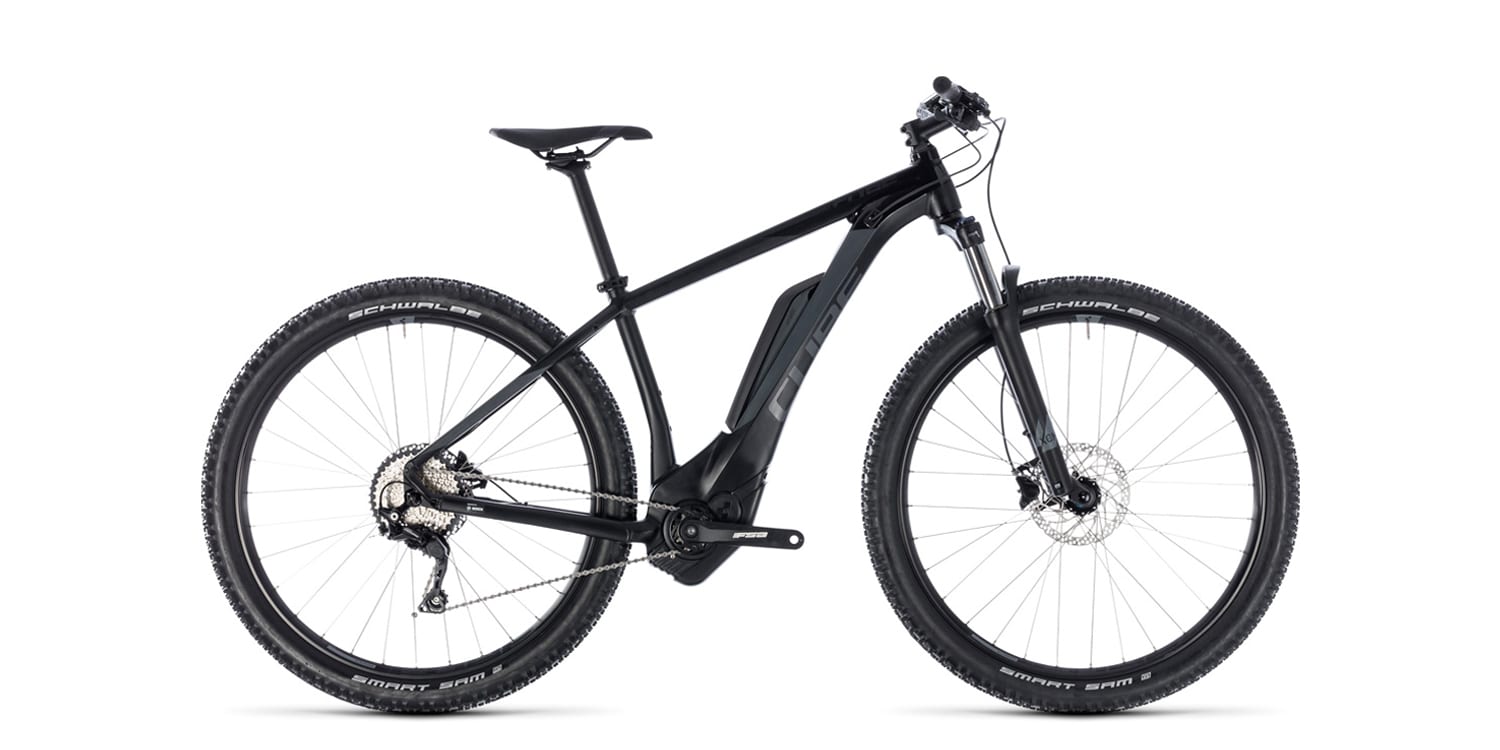
Ben says
Court, while the derailleur may be NX, the XG-1275 10-50 Tooth Cassette is part of SRAM’s GX series, which is not “e-bike specific.” The GX is an overall higher spec, but that means more alloy and less steel. The NX series cassette is an 11-50. I personally feel the GX is the “sweet spot” for SRAM, and they just recently started selling an electronic version of the GX derailleur for less than the previous AXS series. BTW, the 10-50 and 10-52 cassettes need rear wheel hubs with the xD driver interface.
Court says
Wow, those are great insights Ben. I must admit, I didn’t go as deep as I should have on the cassette details. Thank you so much for clarifying these points and mentioning the new electronic GX. Are you looking at ebikes that have this? Which bike do you currently ride?